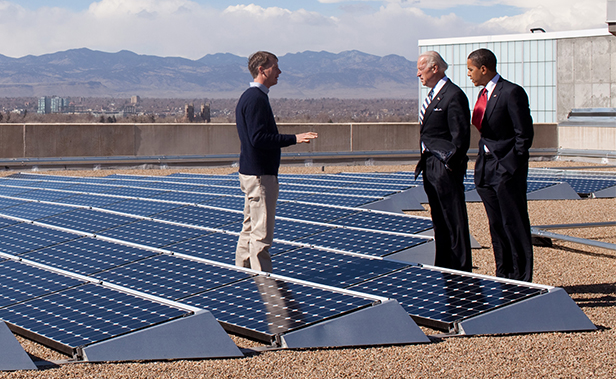SOTU 2016: Obama’s Energy and Climate Legacy
When he gives his final State of the Union speech tonight, President Barack Obama is bound to bring up an issue he has made a cornerstone of his second term in office: climate change.

“Climate change” actually refers to a thicket of interlocking issues, from curbing carbon emissions to funding green technology innovation to simply getting members of Congress to agree that climate change is real.
Obama has plenty to be proud of. His signature accomplishment, of course, was helping to lead United Nations member states to sign the Paris accord on climate change in December. Many countries, including big polluters like India and China, already showed signs they were on a path to changing their energy diets, but the agreement has the potential to go down as a truly historic shift in the global energy economy. In order to make good on America’s end of the bargain, Obama will no doubt implore Congress to approve it before he leaves office.
His lesser-known accomplishments are, in some ways, even more impressive. On Obama’s watch the Department of Energy created the clean technology incubator ARPA-E, which has funded hundreds of millions of dollars in cutting-edge energy technologies, many of which have made strides in the open market. And while much is made of America’s rapidly aging fleet of nuclear energy reactors, the DOE recently announced a program to support North America’s nearly 50 nuclear power startups.
A lot remains to be done. Major legal and Congressional challenges are in the offing for the Clean Power Act, which aims to curtail power plant emissions across the country. If successful, those challenges could undo much of the progress Obama has fought for. But even American businesses are warming to the prospect of clearly defined emissions targets and energy regulation, and the momentum appears to be with Obama.
So as he takes the podium tonight, look for the president to do his best to inspire Congress and the rest of the country to continue where he will soon leave off. Some climate advocates even believe climate change may become an important factor in the 2016 presidential election. If it does it would be a first for an issue that has traditionally ranked near the bottom of voters’ concerns - a most dramatic change indeed.
Keep Reading
Most Popular
Large language models can do jaw-dropping things. But nobody knows exactly why.
And that's a problem. Figuring it out is one of the biggest scientific puzzles of our time and a crucial step towards controlling more powerful future models.
The problem with plug-in hybrids? Their drivers.
Plug-in hybrids are often sold as a transition to EVs, but new data from Europe shows we’re still underestimating the emissions they produce.
Google DeepMind’s new generative model makes Super Mario–like games from scratch
Genie learns how to control games by watching hours and hours of video. It could help train next-gen robots too.
How scientists traced a mysterious covid case back to six toilets
When wastewater surveillance turns into a hunt for a single infected individual, the ethics get tricky.
Stay connected
Get the latest updates from
MIT Technology Review
Discover special offers, top stories, upcoming events, and more.